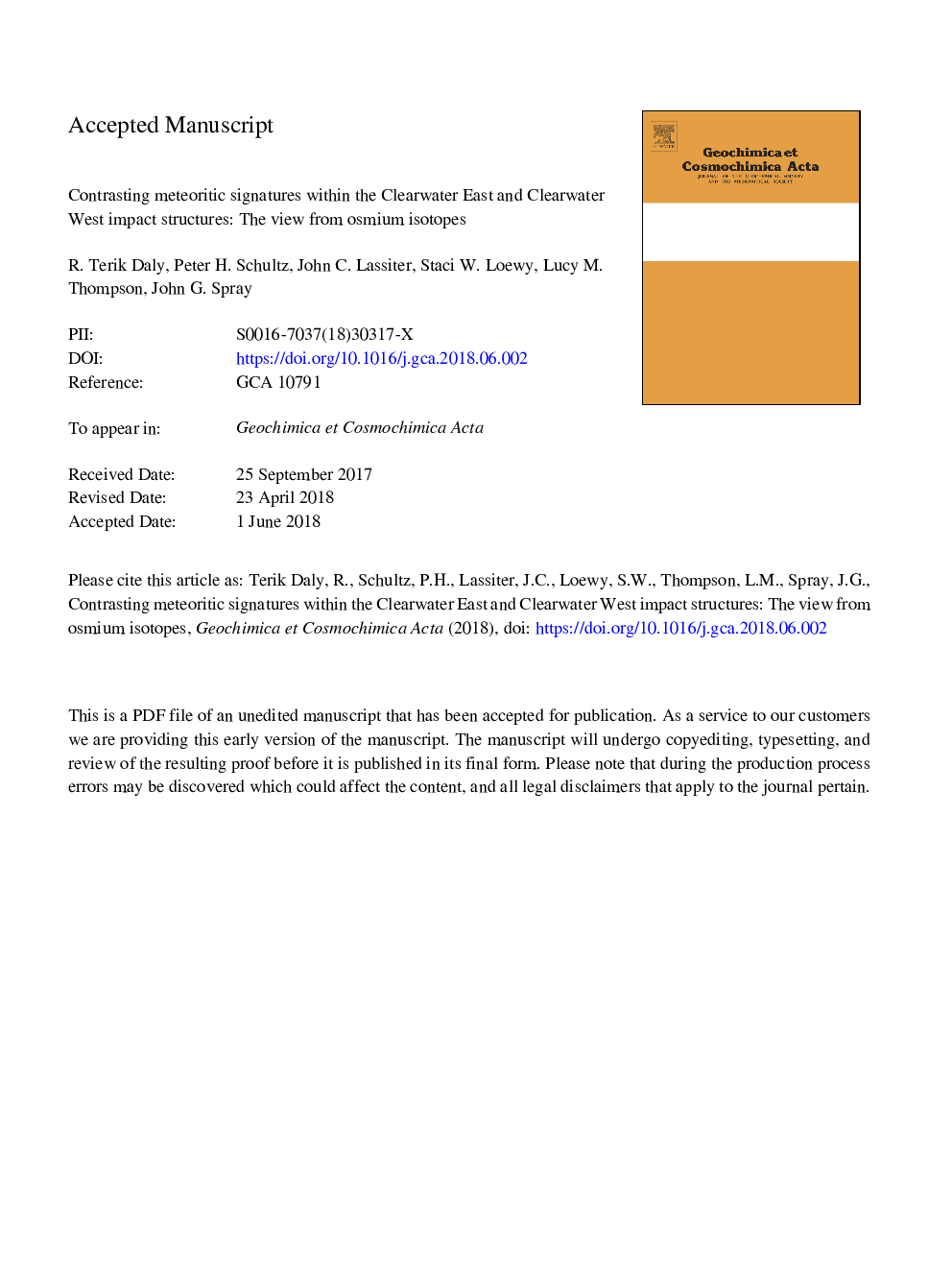| Article ID | Journal | Published Year | Pages | File Type |
|---|---|---|---|---|
| 8910684 | Geochimica et Cosmochimica Acta | 2018 | 66 Pages |
Abstract
Osmium isotopes provide a powerful tool for identifying meteoritic signatures in impactites. We apply the osmium isotope method to impact melt and country rocks from the Clearwater East and Clearwater West craters located in Quebec, Canada. Impact melts from Clearwater East have 187Os/188Os ratios of 0.1281-0.1285. These values indicate a significant meteoritic component, which exceeds that in impact melts at all terrestrial craters studied to date, except Morokweng. Such findings align with earlier results from chromium isotopes and platinum-group elements. In contrast, impact melts from Clearwater West have 187Os/188Os ratios between 6.604 and 59.12. These highly radiogenic ratios are indistinguishable from the 187Os/188Os ratios in country rocks. Hence, osmium isotopes provide no evidence for a meteoritic component in impact melts at Clearwater West. The Clearwater craters formed in almost identical targets. Therefore, target effects cannot readily explain the stark difference between the two Clearwater craters. If melt sheet heterogeneity is similar at the two craters, the probability that melts at Clearwater West host an undetected chondritic component isâ¯<â¯0.2%. Multiple scenarios may explain the non-detection of a meteoritic signature at West; the possibility of a differentiated achondrite impactor could be tested using chromium isotopes. At Clearwater East, a low impact speed (<10â¯kmâ¯sâ1) may best explain the unusually strong meteoritic signature. Although the signature (or its nondetection) at each crater may be related to asymmetric preservation of the impactor component, the results presented here provide further evidence that Clearwater East and Clearwater West were temporally separate impact events.
Keywords
Related Topics
Physical Sciences and Engineering
Earth and Planetary Sciences
Geochemistry and Petrology
Authors
R. Terik Daly, Peter H. Schultz, John C. Lassiter, Staci W. Loewy, Lucy M. Thompson, John G. Spray,
